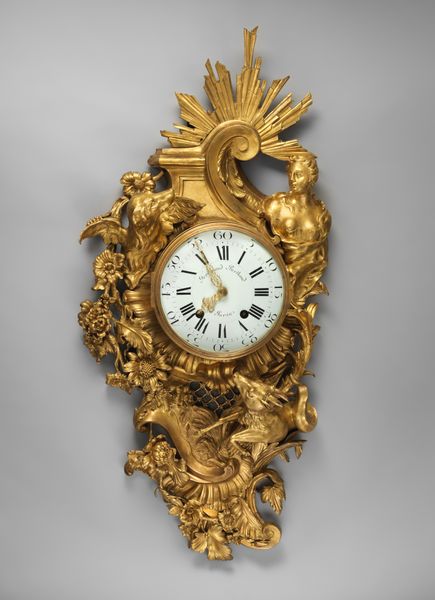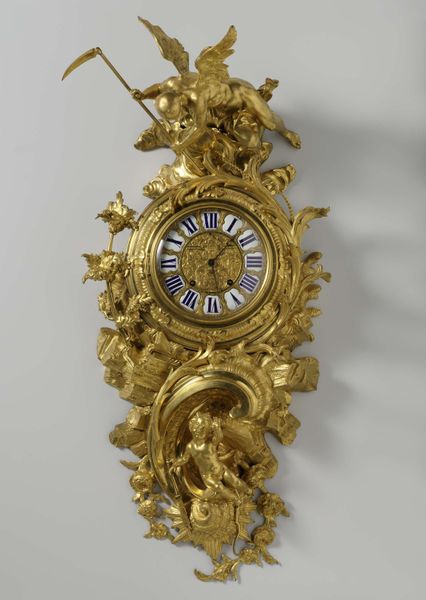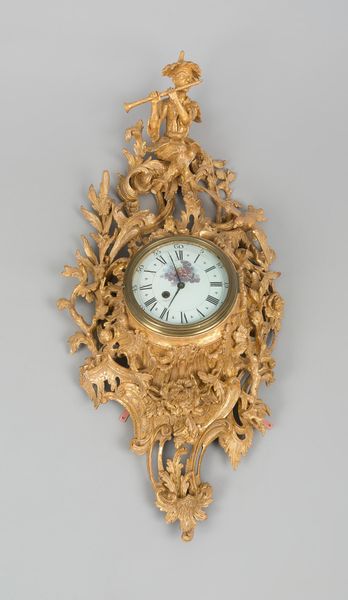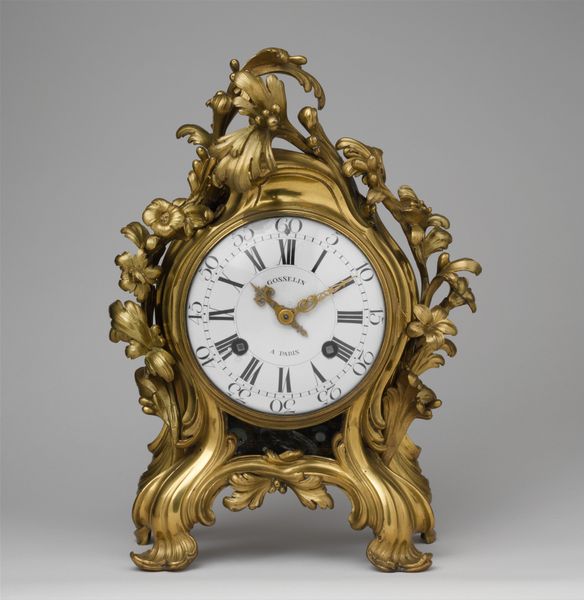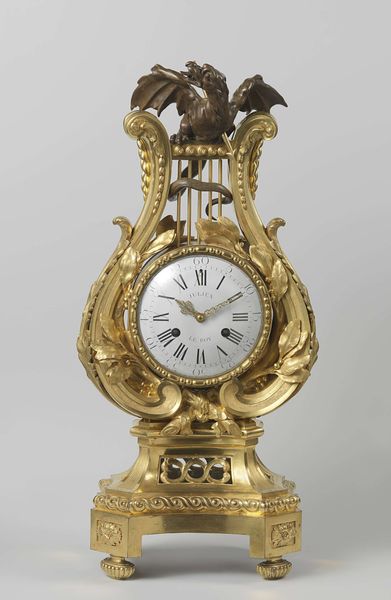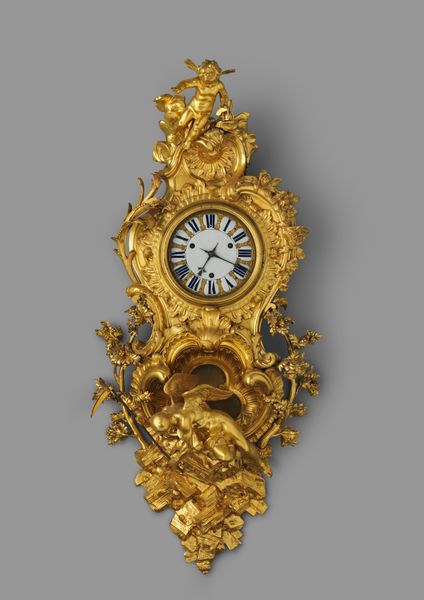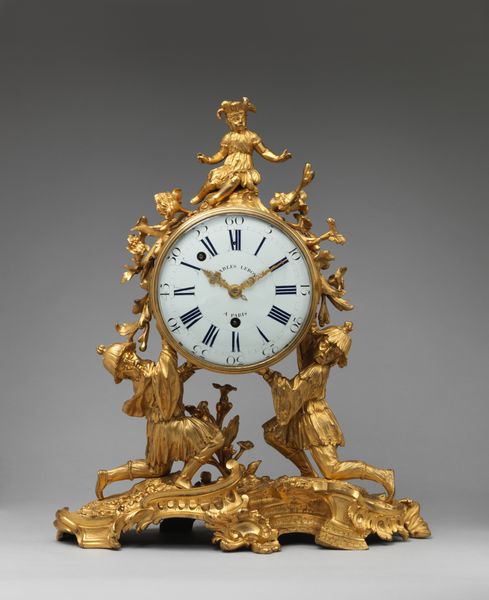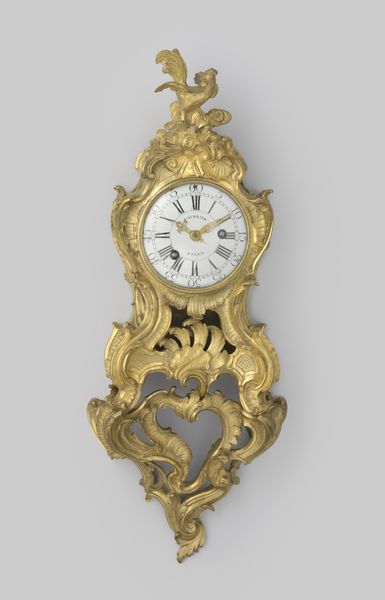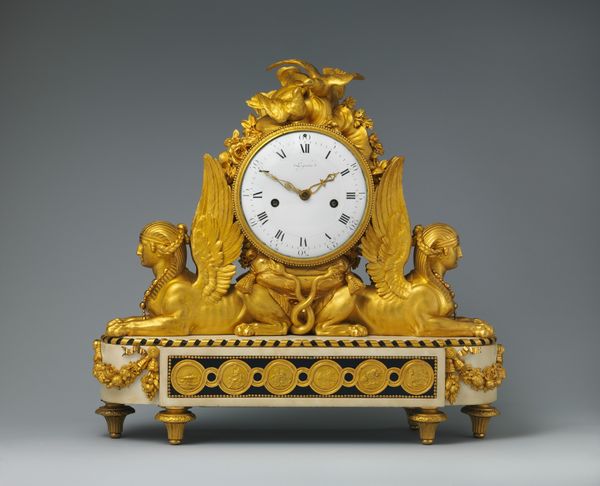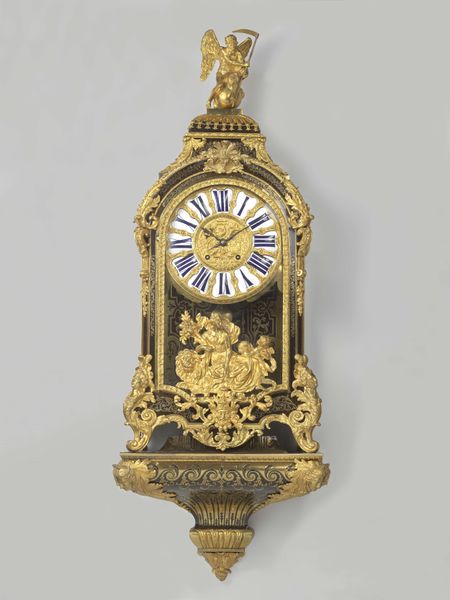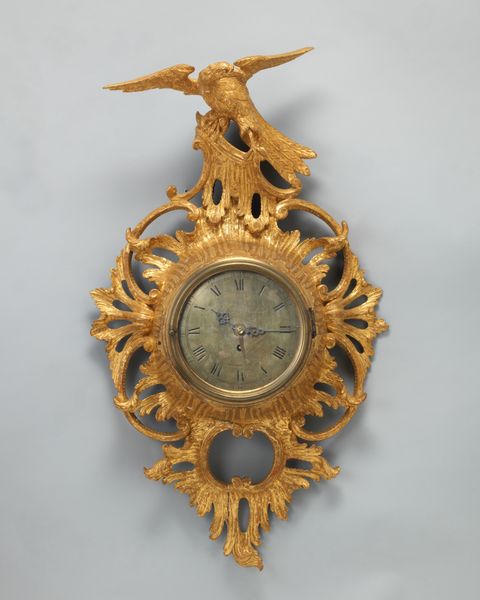
brass, sculpture
#
portrait
#
brass
#
baroque
#
figuration
#
sculpture
#
decorative-art
Dimensions: height 64.5 cm, width 33.0 cm, depth 11.0 cm
Copyright: Rijks Museum: Open Domain
Jacques Caffieri crafted this gilt bronze cartel clock sometime between his birth in 1678 and death in 1755. Cartel clocks were luxury items; their ornate designs mirroring the wealth and status of their owners during the French Régence and Louis XV periods. Consider the craftsmanship and opulence. The gilded bronze speaks to the wealth derived from colonial exploitation, including the exploitation and enslavement of African people. The very notion of time, measured so precisely by this clock, contrasts sharply with the disrupted temporal realities of those displaced and enslaved. These clocks often featured allegorical figures. Here we can see classical figures and motifs. These references to antiquity served to legitimize the aristocratic tastes and power structures of the era. As you stand here, reflect on the layers of history embedded in this decorative object. Consider the labor, the power dynamics, and the complex entanglements of art, wealth, and identity.
Comments
rijksmuseum about 2 years ago
⋮
The renowned artist Caffieri signed the case of this cartel (or wall) clock, just like a painter signs a painting. The asymmetrical Rococo case shows the figure of Diana, goddess of the moon, looking down tenderly upon the sleeping Endymion. They are set in an imaginary framework of rocailles, plants, architectural elements and abstract motifs.
Join the conversation
Join millions of artists and users on Artera today and experience the ultimate creative platform.
